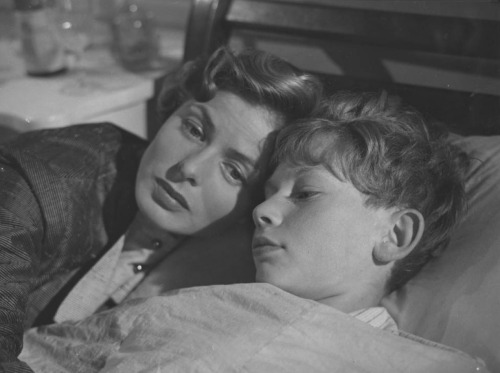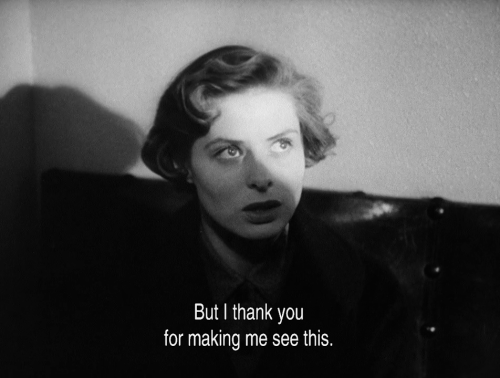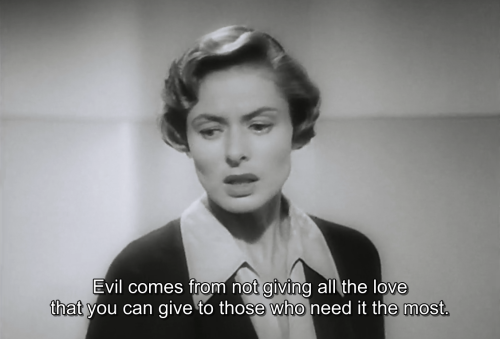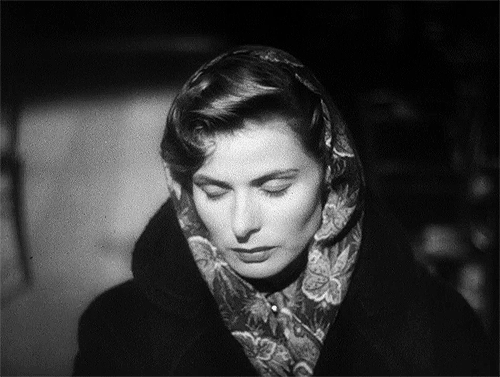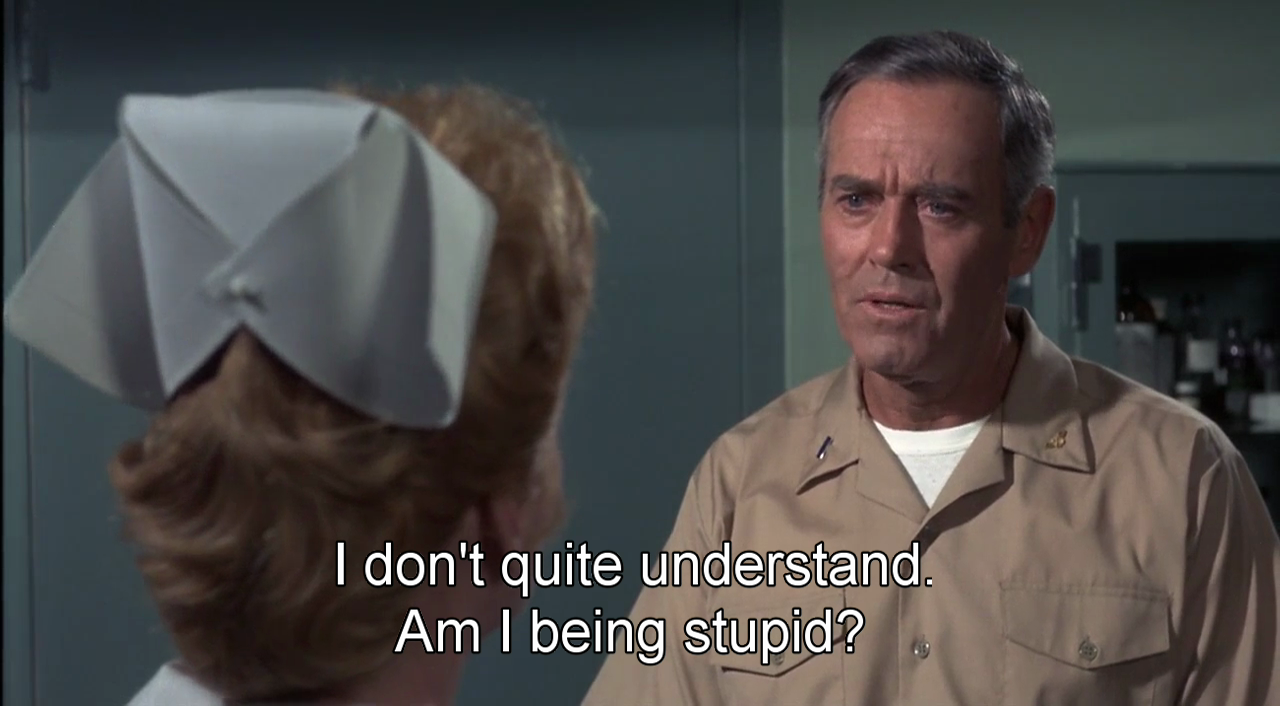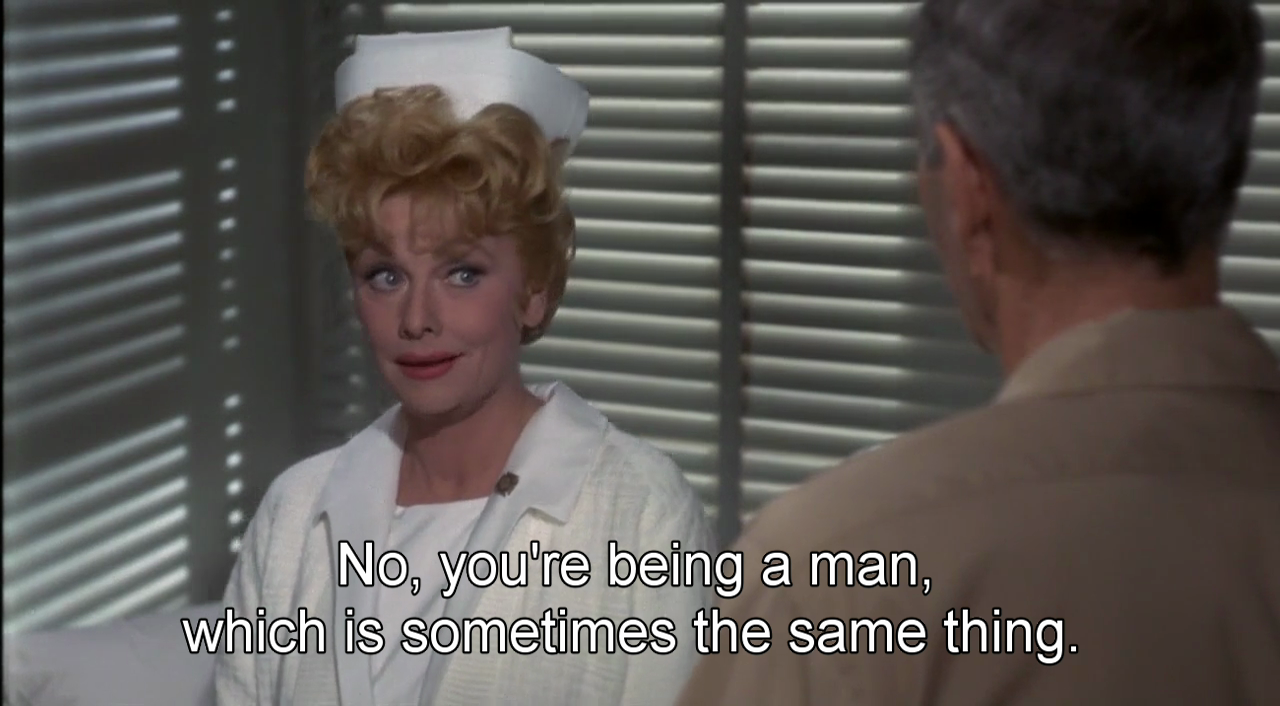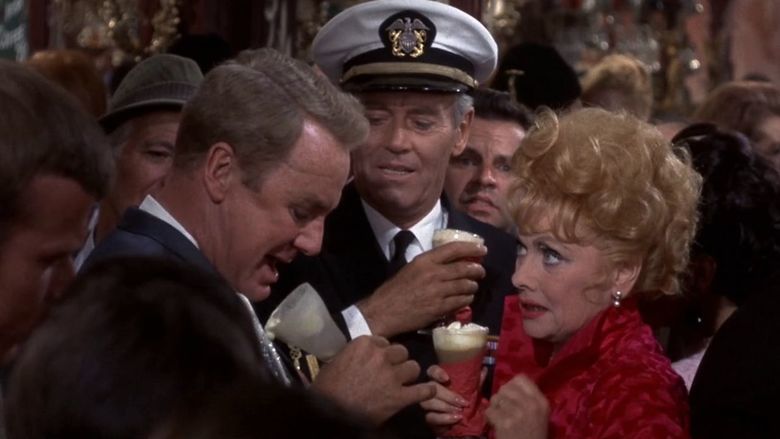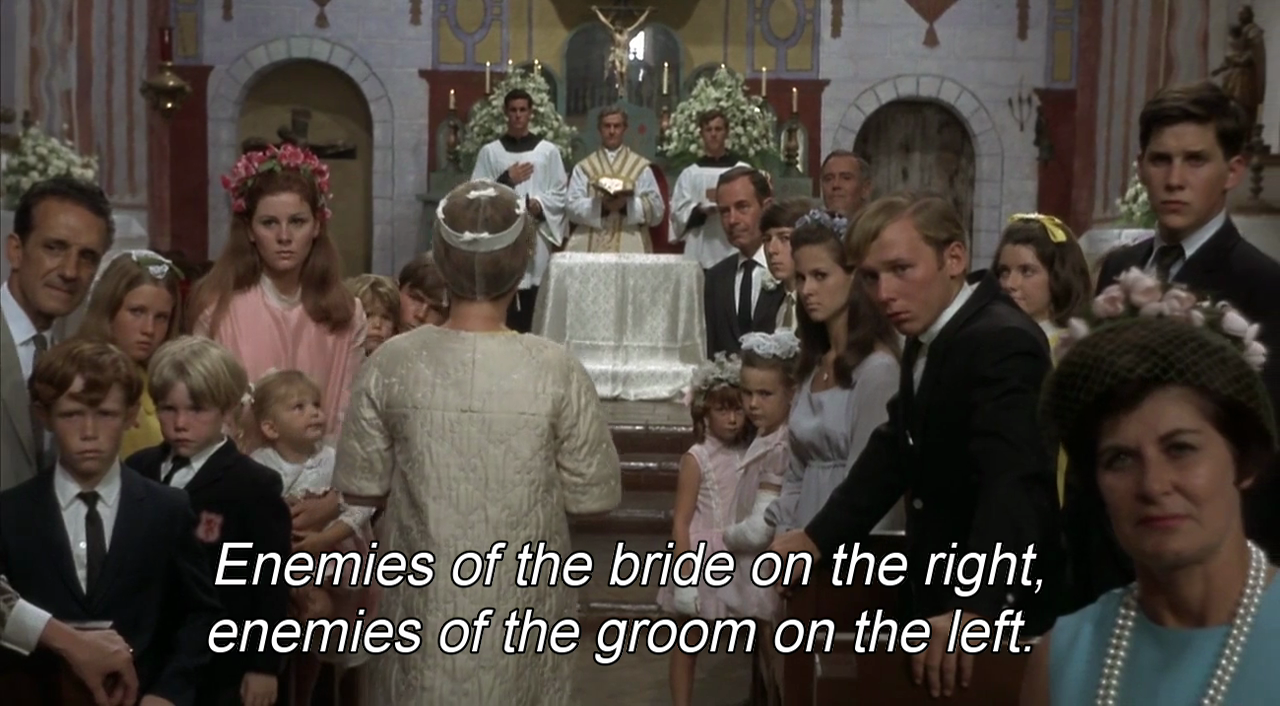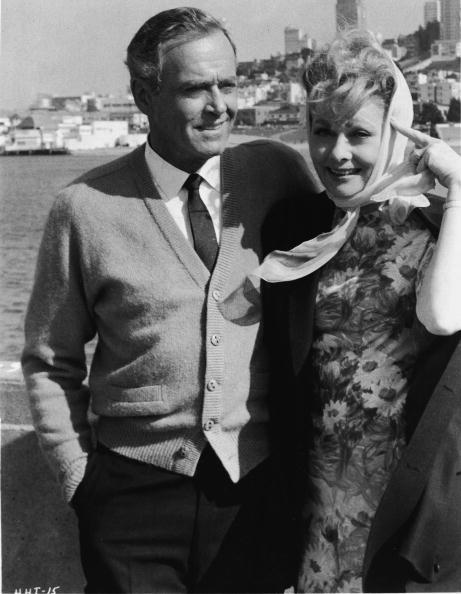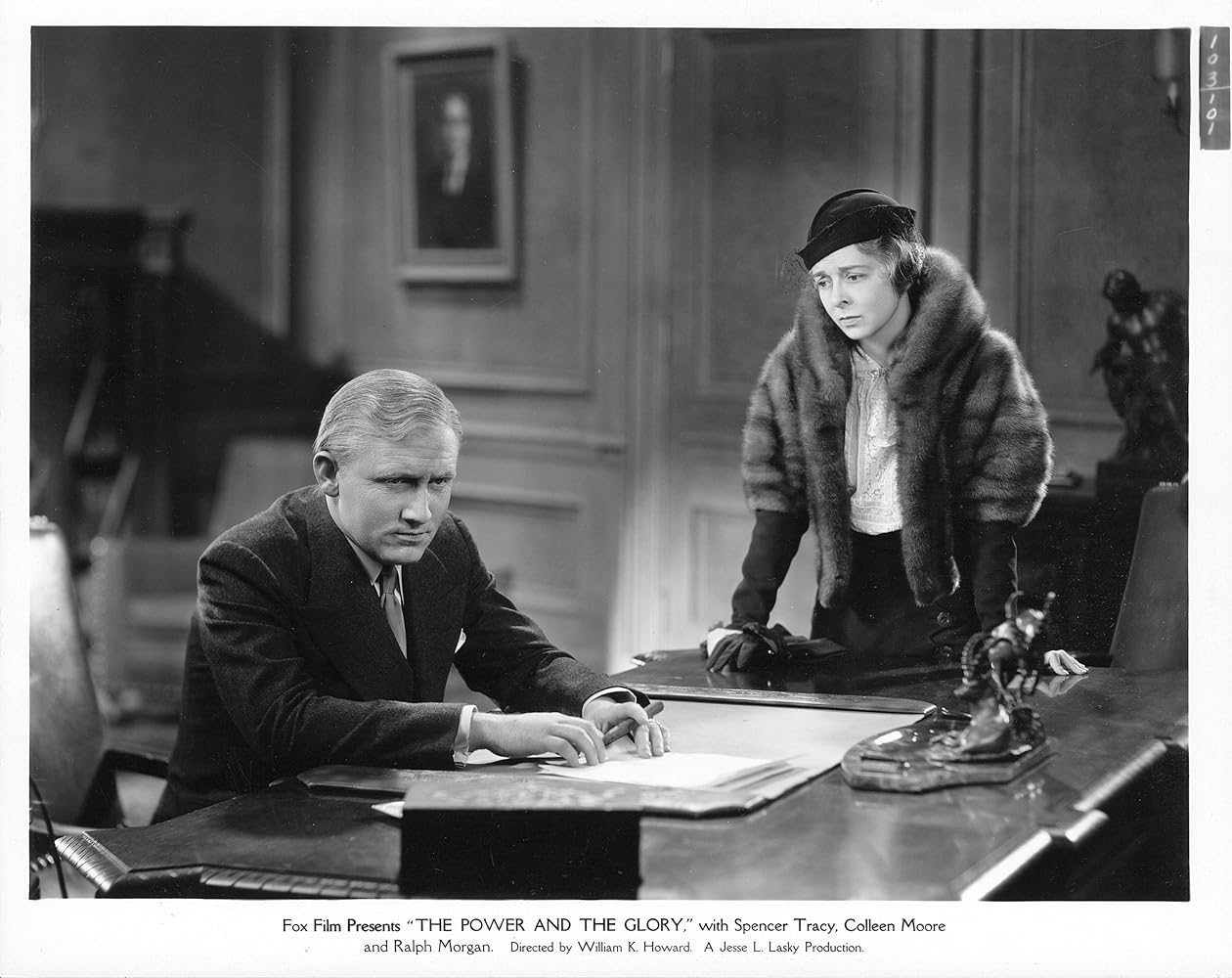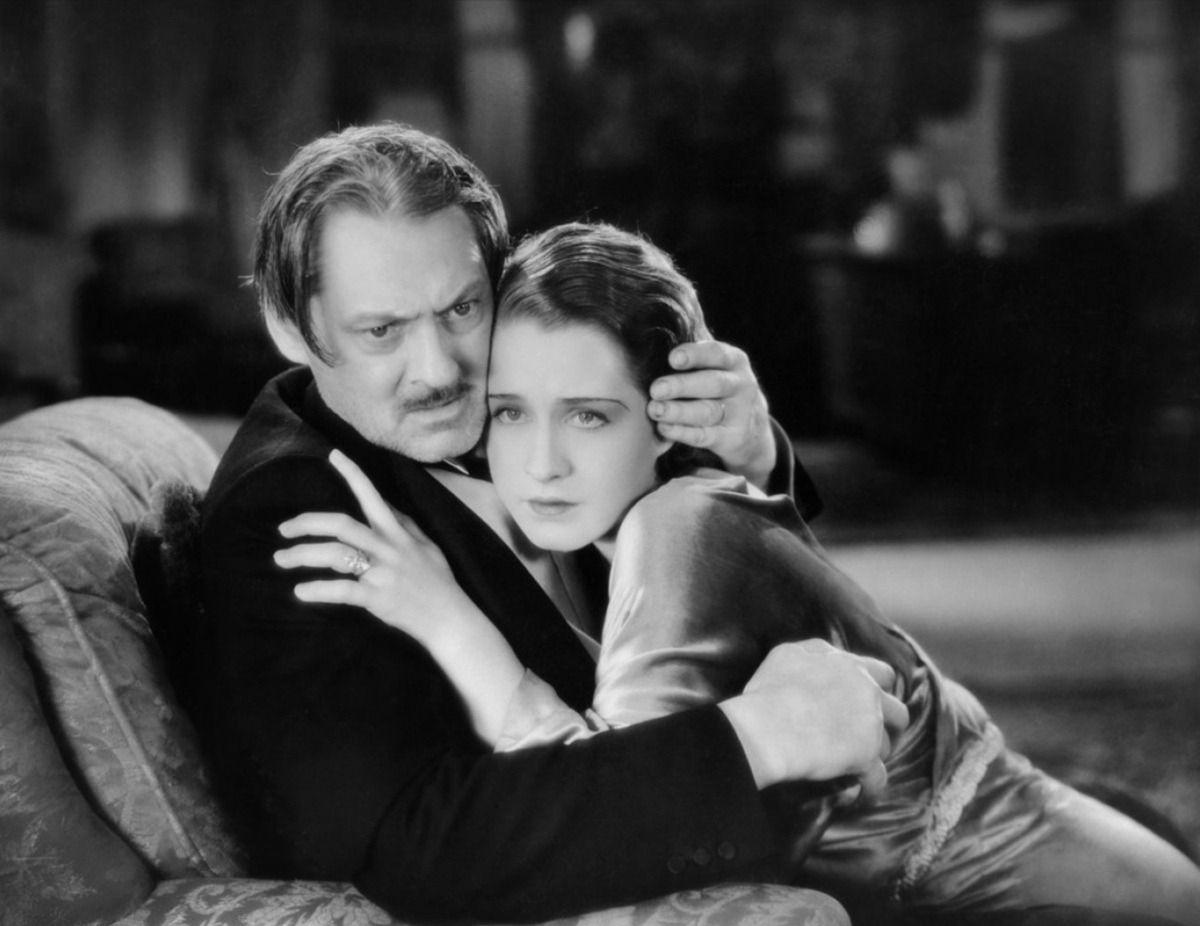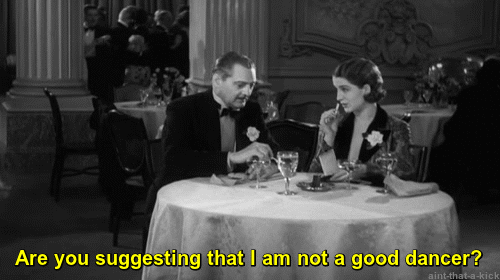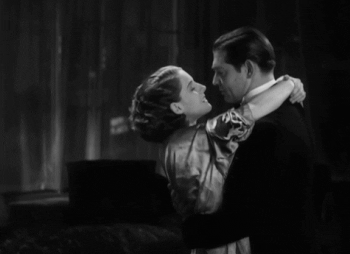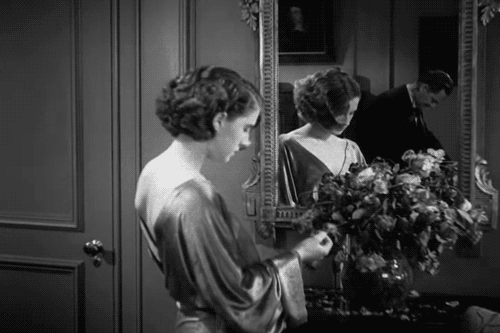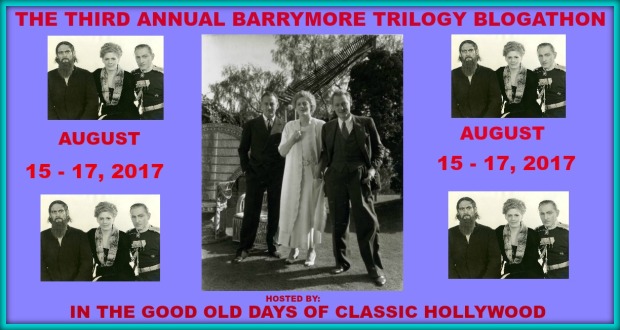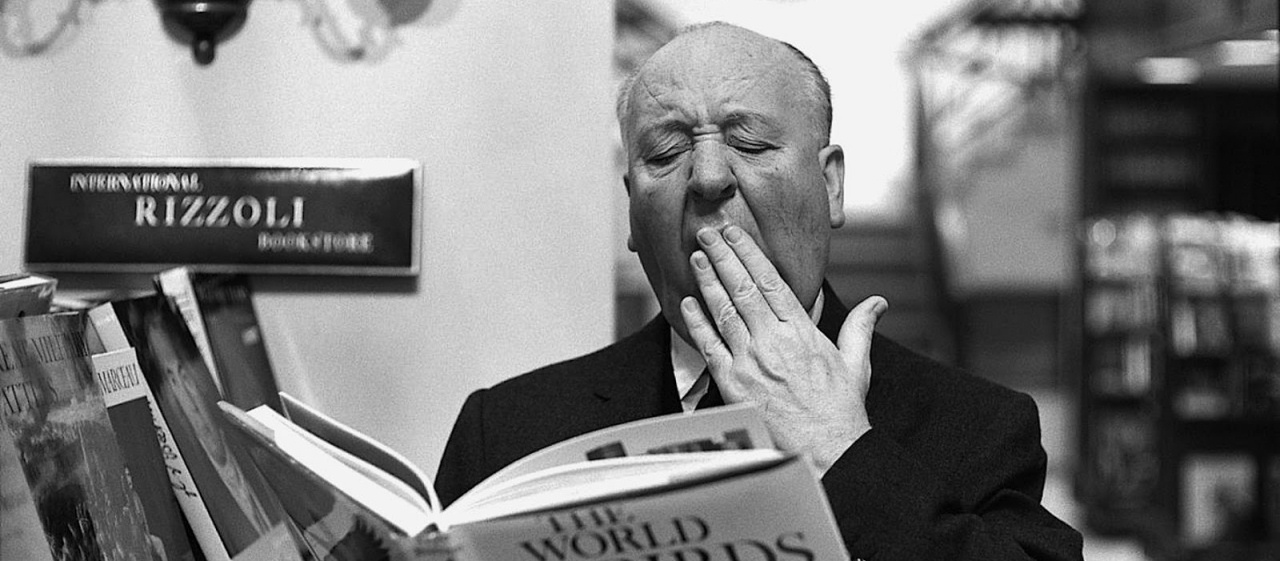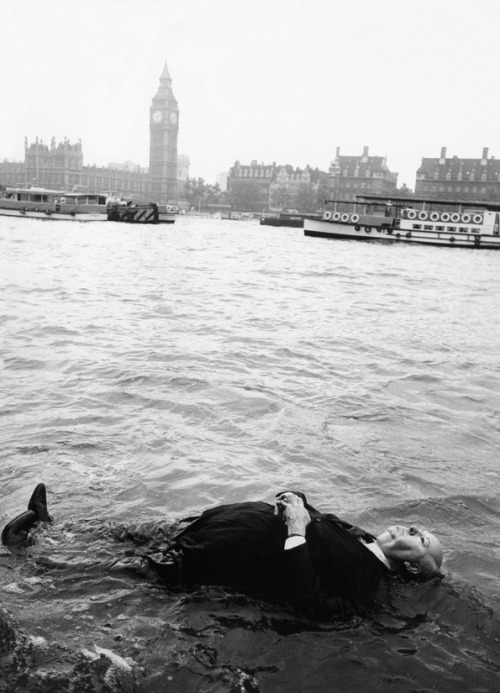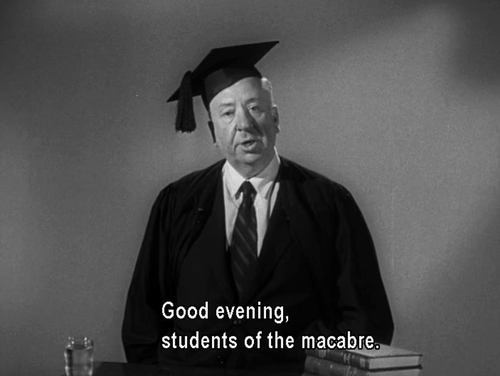Consciência social. Guerras. Esquerda contra
direita. A boba e infantil vida burguesa. Suicídio infantil. Memórias de
guerra. “Europa '51” trata de todos estes temas em seus primeiros trinta
minutos. E já podemos sentir, por estes temas, que é um filme de Rossellini. E
ele só melhora conforme avança a trama.
Social conscience. Strikes. Left vs right.
The silly and childish life of the bourgeois. Child suicide. War memories.
“Europa '51” touches all these themes in its first half an hour. And we can
sense, by those themes, that we are watching a film by Rossellini. And it only
gets better as the plot goes on.
É a morte do filho de Irene (Ingrid Bergman) que
dá início à sua jornada. O menino se sentia negligenciado, por isso ele se joga
de uma escada e se machuca. Quando ele morre depois de uma cirurgia no fêmur,
Irene entra em choque – e nós podemos sentir o choque no olhar de Ingid. Ela
não grita, não chora, não perde a cabeça. Ela fica em choque. Só isso. E é também tudo
isso.
It's the death of Irene's
(Ingrid Bergman) son that starts her journey. The boy was feeling neglected, so
he hurt himself by falling down the stairs. When he dies after a fêmur surgery,
Irene is in shock – and we can see the shock in Ingrid's eyes. She doesn't
scream, she doesn't cry, she doesn't lose her mind. She is in shock. It's only
that. And it's also all that.
Enquanto se recupera, Irene se aproxima do primo
de seu marido, Andrea (Ettore Giannini), um jornalista comunista. Andrea a
convence a ajudar uma pobre família cujo filho precisa de um remédio caro para
sobreviver. Andrea também empresta livros e jornais a Irene. A maneira como ela
vê o mundo muda. Ela tenta ajudar os pobres de todas as maneiras. Ela até
experimenta a noite de entretenimento dos pobres – ela vai ao cinema popular,
em vez de ir ao teatro elitista.
While recovering Irene
becomes closer of her husband's cousin Andrea (Ettore Giannini), a communist
journalist. Andrea convinces her to help a poor family whose son needs an
expensive medication to survive. Andrea also lends Irene books and newspapers.
The way she sees the world changes. She tries to help poor peaople in any way
she can. She even attends the poor people's entertainment night – she goes to
the popular cinema, and not the elitist theater.
Irene passa a ser julgada pelas pessoas ao seu
redor. Não pelas pessoas que ela ajuda, mas pelas pessoas de seu convívio –
isto é, pessoas “respeitáveis”. Ela é uma figura semelhante a Cristo, e sofre
nas mãos de ignorantes que dizem estar “seguindo a lei”, “protegendo a
sociedade” e “fazendo isso pelo bem dela”. Se Jesus fosse uma mulher, ele
provavelmente teria sofrido muito mais.
Irene is then judged by
all people around her. Not by the people she is helping, but by the people she
used to live among – that is, “respectable” people. She is a Christ-like
figure, and suffers on the hands of the ignorants who claim to be “following
the law”, “protecting society” and “doing it for her own good”. If Jesus was a
woman, he might have suffered even more.
Mesmo tendo passado pelos horrores da guerra,
Irene é agora uma mulher privilegiada. Seu novo comportamento é condenado por
sua mãe, por seu marido George (Alexander Knox, que interpretou o presidente Woodrow Wilson em 1944) e seus amigos. Ela ajuda pessoas. Ela faz exatamente o
que Jesus ou um santo fariam. Algum de nós faria o que ela faz? A maioria de
nós gosta de pensar que sim, mas eu acredito que quase ninguém se comportaria
como ela.
Even if she has suffered
the horrors of war, Irene is now a privileged member of society. Her new
behavior is disapproved by her mother, her husband George (Alexander Knox, who
played president Woodrow Wilson in 1944) and her friends. She helps people. She
does exactly what Jesus Christ would do, or a saint would do. Would any of us
do what she does? Most of us like to think we would, but I believe almost
nobody would behave like her.
Além da brilhante Bergman, outra presença no
filme me deixa feliz: Giulietta Masina. Seu papel como uma pobre e trabalhadora
mãe de seis crianças é pequeno, mas ela brilha em cada segundo na tela. Ela
fala alto, é um pouco grossa, espontânea e temperamental. Ela não tem medo de
falar a verdade sobre as coisas. Assim como em muitos de seus papéis
coadjuvantes – como em “A Trapaça” (1955) – Giulietta é aqui inesquecível. Quer
dizer, ela é tão inesquecível que eu estou 100% convencida de que a reconheci
como extra em “Paisà”, de 1946, também dirigido por Rossellini.
Besides brilliant
Bergman, another presence in this movie makes me happy: Giulietta Masina. Her
role as a poor yet hard-working mother of six is a small one, but she shines in
every second of it. She is loud, a bit rough, spontaneous and temperamental.
She is not afraid of saying things the way they really are. As in many of her
supporting roles – like in “Il Bidone” (1955) – here Giulietta is
unforgettable. I mean, she is so unforgettable that I'm 100% sure that I
recognized her in a cameo in 1946's “Paisà”, also directed by Rossellini.
Um filme como este nunca seria feito nos Estados
Unidos, especialmente com as investigações anticomunistas acontecendo. E é
simbólico ter Ingrid Bergman neste papel. Ela havia acabado de interpretar
Joana D'Arc nos EUA quando conheceu Rossellini, engravidou e se tornou persona
non grata em Hollywood. E aqui está ela, na Itália, interpretando uma
verdadeira santa que é vítima de hipocrisia e julgamento. Eu gosto muito da
Hollywood clássica, mas fico feliz por poder ver filmes de outras partes do
mundo e que mostram perspectivas diferentes e exploram temas complexos.
A film like this one
would never have been done in the US, especially with the HUAC investigations
going on. And it's symbolic to have Ingrid in this role. She has just played
Joan of Arc in the US when she met Rossellini, got pregnant and became persona
non grata in Hollywood. And here she is, in Italy, playing a true saint who is
the victim of hypocrisy and judgment. I really enjoy classic Hollywood, but I'm
happy to be able to see films from other parts of the world to show us
different perspectives and explore difficult themes.
É incrível como os temas deste filme refletem o
que está acontecendo no mundo agora – um pouco nos EUA, e muito no Brasil.
Sempre que uma pessoa acredita que todos os seres humanos têm os mesmos
direitos e deveriam ganhar o suficiente para uma existência digna, esta pessoa
é chamada de “liberal” / “social justice warrior” nos EUA ou “comunista” /
“esquerdista” no Brasil.
It's incredible how the
themes in this film mirror what is happening in the world now – a little in the
US, a lot in Brazil. Whenever a person thinks all human beings deserve the same
rights and should earn enough to live decent lives, this person s called “liberal” / “social justice warrior”
in the US or “communist” / “leftist” in Brazil.
Há uma cena em que Andrea e Irene conversam, e
Andrea diz que o mundo será um paraíso quando os homens perceberem que o futuro
precisa incluir progresso para todos. Infelizmente, eu vim do futuro para
transmitir uma mensagem triste a Andrea: nós estamos cada vez mais longe do seu
paraíso. E isso acontece porque pessoas como Irene são impedidas de fazer a
diferença no mundo.
There is a scene in which
Andrea and Irene are talking, and Andrea says that the world will be a paradise
when men realize that the future needs to have progress for everyone.
Unfortunately, I'm here from the future to deliver a sad message to Andrea:
we're further and further from your paradise. And that's because people like
Irene are prevented from making the difference in this world.
This is my contribution to the 3rd Wonderful Ingrid Bergman blogathon, hosted by Virginie at The Wonderful World of Cinema.
